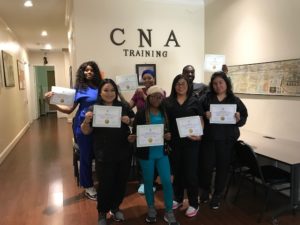 As a CNA, you have one of the most important jobs in healthcare. You are responsible for providing direct patient care and ensuring that your patients are comfortable and safe. However, this can be a very demanding job, and it is easy to become overwhelmed and burned out.
As a CNA, you have one of the most important jobs in healthcare. You are responsible for providing direct patient care and ensuring that your patients are comfortable and safe. However, this can be a very demanding job, and it is easy to become overwhelmed and burned out.
Causes of CNA Burnout
There are several factors that can contribute to CNA burnout. The most common causes of burnout include:
-Long hours: Working extended periods can take a toll on your physical and mental health. Without adequate breaks or rest, exhaustion and burnout are inevitable consequences.
-Stressful environment: Working as a CNA comes with immense pressure and responsibility. Patients, their families, and other healthcare personnel can place high expectations on you for quality care. Too much to do in too little time can affect your mental and physical health.
-Lack of recognition: Unfortunately, CNAs often do not get the recognition they deserve from their employers or other healthcare professionals. This lack of appreciation can make it difficult to stay motivated and positive in your work.
-High patient turnover rate: It can take time to form relationships with your patients if you work in a facility with a high patient turnover rate. Thus, providing them the care and attention they need could be challenging.
-Problem with Coworkers and Supervisors: Working with people who are difficult to get along with can make it hard to stay motivated and positive. If you feel like your supervisors or coworkers do not appreciate your work, this can be a major source of stress and exhaustion.
Tips to Avoid CNA Burnout
If you are feeling burned out as a CNA, there are several steps that you can take to avoid further burnout and keep yourself healthy:
- Get plenty of rest and exercise:This may seem common sense, but taking care of yourself physically is important to avoid burnout. Make sure you get enough sleep every night and try to get some exercise every day, even if it’s just a walk around the block.
- Find a support network:Being a CNA can be emotionally draining, so it’s important to have someone to talk to who understands your needs. Whether it’s friends, family, or fellow CNAs, having people you can rely on will help you stay sane during tough weeks.
- Set boundaries:It’s okay to say no sometimes. If you feel like you’re taking on too much or starting to feel overwhelmed, don’t hesitate to ask for help. It’s important to recognize when you need help and not just try to tackle tasks on your own. Trying to handle everything can be a daunting and intimidating task, which often leads to burnout.
- Take time for yourself:Ensure you have some “me time” to avoid burnout. Whether it’s reading a book, going for a run, or taking a hot bath, make sure you set aside at least 30 minutes each day to do something that relaxes and recharges you.
- Seek help if needed:If you feel like the stress of being a CNA is becoming too much to handle on your own, don’t be afraid to seek professional help. Talking to a therapist or counselor can help you better manage stress and reduce your risk of burnout.
- Manage Stress:As a CNA, you will likely encounter stressful situations. It is important to learn how to manage stress without letting it overwhelm you. Practicing relaxation techniques such as deep breathing or mindfulness can help you stay in control and alleviate some of the stress that comes with being a CNA.
Following these tips can help prevent burnout and stay physically and mentally healthy. Take care of yourself, speak up if you need help, and don’t hesitate to ask for it! Being a CNA is an important job, but it doesn’t have to mean sacrificing your well-being in the process. With the right amount of self-care and support, you can stay healthy and happy while doing what you love.
CNA TRAINING INSTITUTE,INC
140 Eldridge Road # G, Sugar Land, TX 77478
Phone: (346) 812 – 0147
Phone: (281) 201 – 2678
https://cnatraininginstitute.org/
The post How to Avoid Feeling Burned Out as a CNA appeared first on CNA Training in Houston | Consolidated Nurse Aide Training.
 Clinical is a type of training that healthcare providers do to improve their skills in patient care. New CNAs must complete a certain number of clinical hours before taking the state certification exam. Apart from state requirements, CNA clinical allow students to apply
Clinical is a type of training that healthcare providers do to improve their skills in patient care. New CNAs must complete a certain number of clinical hours before taking the state certification exam. Apart from state requirements, CNA clinical allow students to apply  You have finished your CNA training and are ready to embark on your new career. As you begin to prepare for your job interview, it is essential to keep in mind that the interviewer’s goal is to get to know you and determine if you are a good fit for the position. Getting a CNA job is not always easy, but if you follow these tips, you will be well on your way to securing a role in the field.
You have finished your CNA training and are ready to embark on your new career. As you begin to prepare for your job interview, it is essential to keep in mind that the interviewer’s goal is to get to know you and determine if you are a good fit for the position. Getting a CNA job is not always easy, but if you follow these tips, you will be well on your way to securing a role in the field. As a certified nursing assistant (CNA), you will work closely with patients dealing with various health issues. This can be emotionally challenging, and you must have solid emotional intelligence to provide the best possible care for your patients.
As a certified nursing assistant (CNA), you will work closely with patients dealing with various health issues. This can be emotionally challenging, and you must have solid emotional intelligence to provide the best possible care for your patients. As a certified nursing assistant, you will be responsible for providing basic care to patients. This can include everything from helping them bathe and eat to providing emotional support. However, one of your job’s most important aspects is ensuring that patients maintain their Range of motion (ROM).
As a certified nursing assistant, you will be responsible for providing basic care to patients. This can include everything from helping them bathe and eat to providing emotional support. However, one of your job’s most important aspects is ensuring that patients maintain their Range of motion (ROM). Many patients may struggle to stand or walk on their own after an injury or surgery. They may require the help of a certified nursing assistant (CNA) to ambulate or move around. This process is called transfer. It can be very dangerous for both the patient and the CNA if the transfer is not done properly.
Many patients may struggle to stand or walk on their own after an injury or surgery. They may require the help of a certified nursing assistant (CNA) to ambulate or move around. This process is called transfer. It can be very dangerous for both the patient and the CNA if the transfer is not done properly. The radial pulse is the pulse felt on the wrist, on the side of the forearm nearest the thumb. The radial artery runs under the skin, and its pulsing can be felt below the surface. The radial pulse is often used to check a person’s heart rate. However, it can also be used to assess someone’s general health. In particular, the radial pulse can give clues about a person’s blood pressure and circulatory status.
The radial pulse is the pulse felt on the wrist, on the side of the forearm nearest the thumb. The radial artery runs under the skin, and its pulsing can be felt below the surface. The radial pulse is often used to check a person’s heart rate. However, it can also be used to assess someone’s general health. In particular, the radial pulse can give clues about a person’s blood pressure and circulatory status. A clean and well-made bed can make a big difference in a patient’s morale. It also provides them with a sense of comfort and security. As a certified nursing assistant (CNA), you will be responsible for ensuring that your patients’ beds are made correctly and safely.
A clean and well-made bed can make a big difference in a patient’s morale. It also provides them with a sense of comfort and security. As a certified nursing assistant (CNA), you will be responsible for ensuring that your patients’ beds are made correctly and safely. A certified nursing assistant is a health care professional who provides primary nursing care to patients in hospitals, long-term care facilities, and clinics. The duties of a CNA include but are not limited to: bathing and grooming patients, toileting and incontinence care, transferring and ambulating patients, providing a range of motion exercises, vital signs monitoring, and feeding and nutrition assistance.
A certified nursing assistant is a health care professional who provides primary nursing care to patients in hospitals, long-term care facilities, and clinics. The duties of a CNA include but are not limited to: bathing and grooming patients, toileting and incontinence care, transferring and ambulating patients, providing a range of motion exercises, vital signs monitoring, and feeding and nutrition assistance. Certified Nursing Assistants, more commonly known as CNAs, are always in high demand. There are many reasons for this, but the most common is that CNAs play an important role in the health care industry. They provide critical support to nurses and other medical professionals, and they often have the opportunity to interact directly with patients. This article will explore some top reasons
Certified Nursing Assistants, more commonly known as CNAs, are always in high demand. There are many reasons for this, but the most common is that CNAs play an important role in the health care industry. They provide critical support to nurses and other medical professionals, and they often have the opportunity to interact directly with patients. This article will explore some top reasons  Certified Nursing Assistants, more commonly known as CNAs, are always in high demand. There are many reasons for this, but the most common is that CNAs play an important role in the health care industry. They provide critical support to nurses and other medical professionals, and they often have the opportunity to interact directly with patients. This article will explore some top reasons
Certified Nursing Assistants, more commonly known as CNAs, are always in high demand. There are many reasons for this, but the most common is that CNAs play an important role in the health care industry. They provide critical support to nurses and other medical professionals, and they often have the opportunity to interact directly with patients. This article will explore some top reasons  Nowadays, many people are looking for a job to earn money. But the ones who have no degree might feel insecure about their future because they think that there is no way for them to work and have a good life. However, this is not an accurate assumption. Many jobs only require the applicant to take a skills test and have a high school diploma or equivalent. One of them is a Certified Nursing Assistant (CNA).
Nowadays, many people are looking for a job to earn money. But the ones who have no degree might feel insecure about their future because they think that there is no way for them to work and have a good life. However, this is not an accurate assumption. Many jobs only require the applicant to take a skills test and have a high school diploma or equivalent. One of them is a Certified Nursing Assistant (CNA).